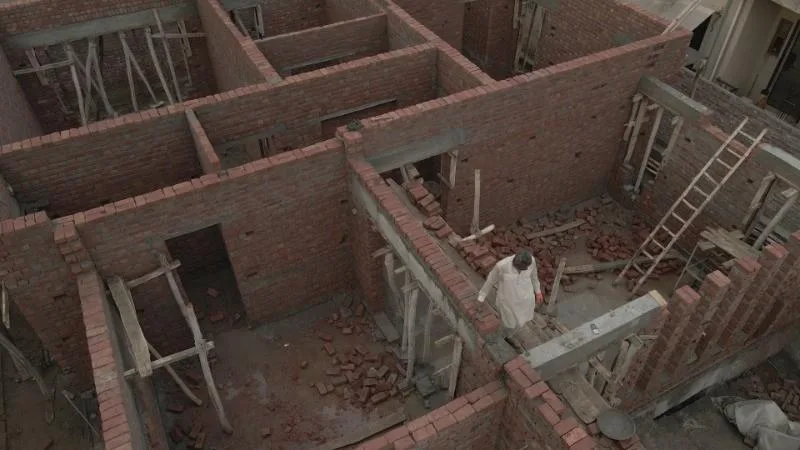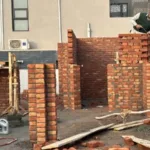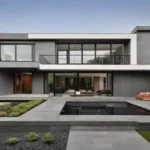Grey Structure: Advantages and Disadvantages of its Construction
Introduction to Grey Structure Construction
When the frame of a building is put up but not the finishing touches like plastering, flooring, or painting, this is called grey structure construction. Grey structure is the process of erecting a building’s structure. Grey Structure: Advantages and Disadvantages of its Construction.
Using this method, you only build a building’s framework. By framework, it means its base, columns, beams and roof etc. It doesn’t include finish either on the inside or outside. While grey building construction has some benefits, it also has some disadvantages that you should think about.
Also Read: Infrastructure construction from a local’s point of view
Advantages of Grey Structure Construction
Following are some of the advantages of grey structure:
Cost-effectiveness:
One of the primary advantages of grey structure construction is its cost-effectiveness. In it the focus is on building the essential structure that would later on lead to the second phase for the construction also known as “finishing phase”.
Grey structure itself requires less and fewer materials compared to finishing phase. Without the elaborate finishes, fewer labor is also engaged compared to traditional construction methods. This can result in significant cost savings. It also makes it an attractive option for budget-conscious projects for individuals as well as for any investor from a business point of view.
Flexibility in Design:
Grey structure construction offers one greater flexibility in design and structure compared to any otherconstructional project that is fully finished. With the basic structure in place, it becomes easier to modify the layout in grey structure. If any need arises to make any structural changes during the construction process, it is easier to do so during this phase than the finishing phase.
This flexibility allows for customization according to the specific requirements of the client, project requirement and its scale. It allows the experts to accommodate the changes and make adaptations more efficiently.
Also Read: About Political Impact on Construction Sector in Pakistan
Faster Construction Time:
Grey structure construction is simplified in nature. It tends to be faster than all other traditional construction methods that were used in olden times for residential or commercial constructions. Grey Structure Advantages and Disadvantages of its Construction.
Since the focus is on preparing the primary structure quickly, it reduces the overall construction time. This enables the projects to be completed within shorter deadlines that are easy to meet. This factor can be particularly advantageous for projects with time constraints or where swift occupancy is required by the user.
Sustainability:
Grey structure construction is often considered more environmentally friendly compared to fully finished construction methods. Grey structure construction reduces the environmental impact byminimizing the usage of finishing materials such as paints and coatings etc. It also reduces the overall cost which is associated with manufacturing and transportation of such materials.
Additionally, the reduced construction time results in lower energy consumption and emissions from constructional activities which contributes to an overall sustainability for the environmental surroundings.
Also Read: What is Grey structure and what is included in it?
Disadvantages of Grey Structure Construction
Following are some of the disadvantages of grey structure:
Limited Aesthetic Appeal
One of the main drawbacks of grey structure construction is that is has a limited aesthetic appeal. Since the building remains unfinished, it lacks the polished look of fully completed structure. Be it residential or commercial, the structure remains like the “outer shell” with no attraction.
Solely the construction of a Grey structure may not be suitable for projects where visual aesthetics are a priority, such as high-end residential or commercial developments etc. Grey Structure Advantages and Disadvantages of its Construction.
Also Read: Cost Considerations in Grey Structure Construction: How to Budget Wisely
Vulnerability to Environmental Factors
Grey structure buildings are more susceptible to damage from environmental factors. Ever changing Moisture, sunlight and temperature fluctuations may cause damage to the structure even before the beginning of the finishing phase.
Without protective finishes, the building materials are exposed to the elements, leading to potential deterioration over time. This can result in higher maintenance costs and a shorter lifespan for the structure. Also, it results in budget to be disturbed in such cases where wear and tear of the structure needs to be addressed.
Higher Maintenance Requirements
Maintaining a grey structure building requires more effort compared to fully finished constructions. Without protective coatings, the building materials are more prone to wear and tear. It requires regular inspections and repairs to ensure structural integrity is intact.
Additionally, the absence of finishes makes cleaning and upkeeping the structure in prime condition more challenging. It leads to potentially increasing maintenance expenses over time for the building’s lifespan.
Limited Insulation Properties:
Grey structure buildings lack insulation materials in their walls and roofs. As a result of which, they may have inferior thermal performance compared to fully finished structures. This can lead to higher energy consumption for heating and cooling the building as per the project’s requirement. Which could resultin increased utility costs for occupants. In regions with extreme climates, this lack of insulation can also affect indoor comfort levels that potentially could lead to health conditions like hypothermia etc.
Also Read: Know what industrial construction is and what are some of its types
Comparison with Other Construction Methods
Grey structure construction should be evaluated in comparison with other construction methods such as conventional brick and mortar construction or pre-engineered steel buildings. Each method has its own set of advantages and disadvantages, like all things. The choice depends on factors such as budget, timeline, design requirements and environmental considerations which should be considered by the user and investor thoroughly.
Conclusion:
In conclusion, grey structure construction offers several advantages. These advantages being cost-effectiveness, flexibility in design, faster construction time and sustainability. However, it also comes with drawbacks such as limited aesthetic appeal, vulnerability to environmental factors, higher maintenance requirements and limited insulation properties.
Before opting for grey structure construction, it is essential to carefully weigh these factors and consider the specific needs of the project.
Also Read: Residential Construction: Most preferred structures in Pakistan
FAQs
Q1: Is grey structure construction suitable for all types of buildings?
A1: Grey structure construction is suitable for a wide range of buildings, including residential, commercial, and industrial structures. However, it may not be ideal for projects where visual aesthetics are a priority.
Q2: How can I ensure the durability of a grey structure building?
A2: Regular maintenance and timely repairs are crucial for ensuring the durability of a grey structure building. Additionally, using high-quality building materials and implementing proper waterproofing measures can help extend the lifespan of the structure.
Q3: Are grey structure buildings energy-efficient?
A3: Grey structure buildings may not be as energy-efficient as fully finished structures due to their limited insulation properties. However, implementing energy-saving measures such as efficient HVAC systems and insulation upgrades can help improve their energy performance.
Q4: Can I add finishes to a grey structure building later?
A4: Yes, finishes such as plastering, flooring, and painting can be added to a grey structure building at a later stage if desired. However, it is essential to ensure compatibility with the existing structure and consider any additional costs involved. Grey Structure Advantages and Disadvantages of its Construction.
Q5: What factors should I consider when deciding between grey structure construction and other methods?
A5: When deciding between grey structure construction and other methods, consider factors such as budget, timeline, design flexibility, maintenance requirements, and environmental considerations to determine the most suitable option for your project.





Leave a Reply